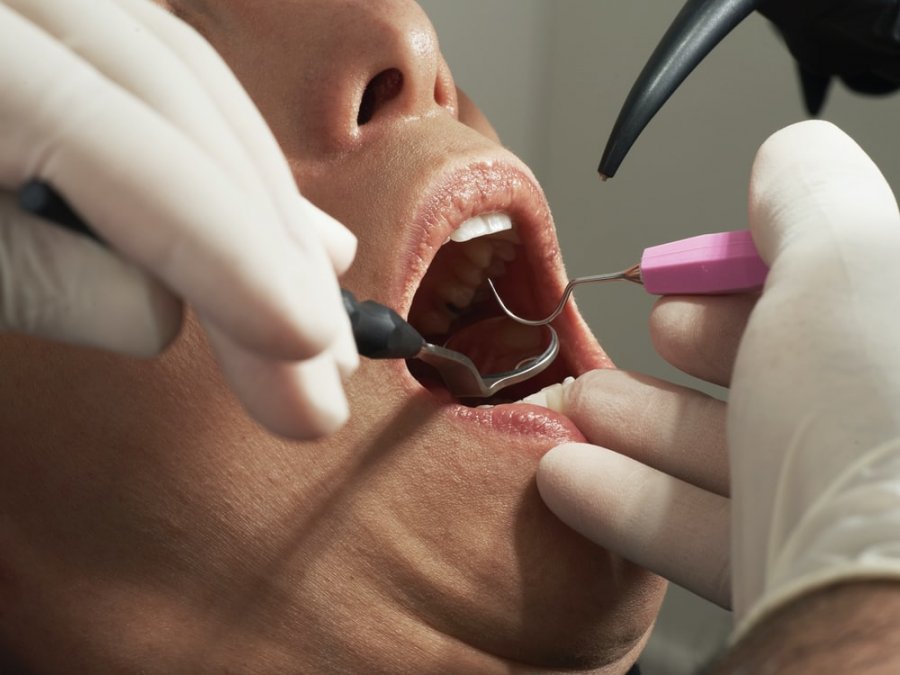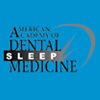How Do You Know If You Have A Cavity?
A common question that many people end up asking on their first visit to the dentist is, how do you know if you have a cavity? This is often because people tend to miss their first cavity and are shocked when they hear it from their dentist. That being said, while it may be due to a lack of knowledge or prominence, many people don’t take cavities as seriously as they should be taken.
Although, this condition affects millions of people across the globe and can be quite annoying. Moreover, ignoring a cavity will often lead to it worsening, and in some cases, can even lead to more severe conditions. So, to make sure this doesn’t happen, you must be wondering what exactly is a cavity and why does it happen? Well in this article, we’ll be going over the complete guide to make sure you know how to keep your teeth clean and what to do if you end up with a cavity.
What Is A Cavity?
A cavity is an area on the hard covering of your teeth that has developed an opening leading to permanent damage. Also known as tooth decay, these holes can be infested with bacteria that will gradually build up acid in your teeth. This acid then eats away at both the enamel and the internal cavity of your tooth.
Due to this, a cavity that is left alone will continue to grow and cause increased pain until it can become a much larger problem reaching deeper into your tooth. That being said, while they may sound quite distressful, cavities are actually quite common. According to the CDC, approximately 90% of people aged 20 or older have had at least one cavity.
How are they caused
When it comes to their cause, cavities happen due to decay, the presence of bacteria, and a lack of hygiene. Essentially, all these factors tend to go hand in hand to create an environment wherein bacteria are able to break the outer enamel of your tooth with acid and create a small opening. Among others, the most common bacteria known to cause tooth decay found in cavities is Streptococcus mutans as well as various Lactobacillus in later stages.
Based on the type of bacteria and area in which the cavity is, they can also form in different ways. These differentiations lead to varying types of cavities which are all known to have different effects and should be treated differently. Let’s look into the three primary types of cavities.
Types Of Cavities
Smooth Surface Cavity
As the name suggests, smooth surface cavities occur on the smoother parts of your teeth and thanks to this, are also the most manageable. This is because they are highly accessible and can be cleaned with the help of normal dental hygiene methods such as regular flossing. These are also the easiest to prevent and as long as you don’t allow too much plaque build-up, you won’t have to worry about these cavities.
Pit & Fissure Cavity
One step further from the previous type, pit and fissure cavities happen when bacteria and food build-up lead to a larger pit or hole. Often found in the molars, these cavities can be quite difficult to deal with as they will gradually fill up with more sugar, and food, causing them to grow larger. Subsequently, these cavities can also become quite painful and need to be treated immediately after detection.
Root Cavity
The most problematic type of cavities, root cavities are the ones that have managed to decay all the way into the root of your teeth. This leads to exposed nerve endings without the protective enamel that covers outer layers which can cause two major issues, immense pain, and rapid spread. Due to the combination of these two factors, root cavities need to be treated ASAP otherwise they can lead to immense and permanent decay of your teeth.
Factors That Increase Your Risk Of Getting A Cavity
While many people maintain their dental health and don’t seem to have too much plaque build-up, you might be wondering why so many still get cavities. This is due to a variety of reasons that increase the risk of getting cavities. Here are some factors that can make you more likely to get a cavity:
Sugary/Sticky food or drink
The most common culprit and a risk factor for getting cavities, sugary foods, or ones that have a sticky texture can wreak havoc on your dental hygiene. This is because such foods can cling to your teeth for extended periods of time and with their high sugar content, promote bacterial growth and cavity formation. Here are some of the worst foods for your teeth.
Eating after brushing at night
One of the primary reasons it is important to brush your teeth is to get rid of food particles and plaque build-up between your teeth. Now, let’s say you eat a meal after brushing your teeth and go to sleep. In this situation, it is likely that the leftover food particles will be stuck between your teeth overnight which can easily promote bacterial growth and lead to tooth decay.
If you are too young or old
Surprisingly, your age can also be a factor when it comes to how susceptible you are to getting a cavity. This is because when you are very young or old, your gum development is often much less than a person in their 30s or 40s. This gum development is an important defense against root decay due to which people at younger or older ages can get cavities much more easily.
The location of your teeth
Unlike the others, this risk factor is one that affects all of us and is more specified towards the chances of individual teeth developing cavities. Essentially, as cavities are directly linked to stuck food or a build of plaque that can promote bacterial growth more food means more risk. Due to this, teeth with grooves or pits tend to be more prone to cavity growth as they can hold more food particles.
Along with being able to collect more unwanted particles, these grooves are also harder to clean and the combination of this makes them much more susceptible to cavities.
How To Avoid Cavities (Prevention)
Avoiding risk factors is one thing, but to ensure that you can truly avoid cavities, there are various things you can do to prevent tooth decay from happening in the first place. Some things you can do to avoid cavity development are:
Use fluoride toothpaste and brush twice daily
To avoid having large gaps where bacteria and food particles can begin eating away at the protective layer above your teeth, you should brush your teeth at least twice a day. Along with this, make sure to use toothpaste that has fluoride as it is the most effective at maintaining optimal dental hygiene. Here are some more facts about fluoride and its immense utility.
Go to your dentist regularly
While there are many hygiene steps you can take yourself, going to your dentist is something that can always make a huge difference. More often than not, your dentist can tell you things about your teeth' health that you wouldn’t be able to ascertain on your own. For example, if you have a damaged tooth that is prone to cavities or too much plaque, your dentists can help you avoid any subsequent cavities.
Wash your mouth after a meal
With one of the most common causes of cavities being food particles that get stuck between your teeth, the best way to prevent them is to reduce the presence of such food particles. To do this, you can either use water or mouthwash and gargle after a meal. This ensures that any loose pieces of food stuck in your mouth get dislodged and don’t lead to decay.
Drink lots of water
Among a plethora of other benefits, water works wonders when it comes to cleaning out your mouth of any food particles. Along with this, regularly drinking water can keep your mouth wet which can promote saliva production and subsequently, reduce the chances of tooth decay. However, make sure you don’t just stick to drinking water and still take out time to floss, brush your teeth, and do other dental hygiene activities.
How Do You Know If You Have A Cavity? (Symptoms)
While you may follow all the prevention tips and maintain good dental health, cavities can still pop up. So, the most important thing at this point is, how do you know if you have a cavity? Well, the best way to find out is by noticing if you have any of these prominent cavity symptoms and signs:
Temperature sensitivity
This is one of the most common symptoms that you might have a cavity in your mouth. While hot and cold sensitivity can also be caused by other conditions, it is often due to tooth decay exposing the dentin in your teeth which is much more sensitive to temperature. So, the worse your cavity gets, the more nerve endings are exposed which can gradually make this sensitivity stronger and more painful.
Pain in one or more teeth
A telltale sign of a cavity is pain in one or more of your teeth. This pain could either be lingering without any trigger or occur when you bite or chew. In most cases, cavities will cause pain due to the exposed nerve endings in which tooth decay has opened up. Subsequently, this decay also leads to inflammation which can increase the pain until the cavity is filled.
Discoloration of your teeth
After a certain point of decay, the area within and around cavities begins to turn brownish or black. Thus, if you see any strange colors or dark marks in or around your teeth, it might be best to show them to your dentist.
A visible hole in your teeth
While this symptom is rarely the first one that people find when it comes to cavities, a visible hole is a clear cavity indication. This is because as tooth decay progresses, the bacteria will begin to create a hole in your teeth which can easily be seen or felt.
Bad breath
Bad breath is a symptom caused by the increased presence of bacteria in your mouth when you have a cavity. As the amount of bacteria grows, this can cause a foul odor in your mouth which can be problematic for both you and the people around you. That being said, this symptom is often hard to link with cavities as it can be caused by various other conditions. Similarly, bad breath can also happen due to normal activities such as eating smelly food or not brushing your teeth.
A build-up of pus
While most cavities are treated before they can exhibit this symptom, serious cases that have been left untreated can end up turning into abscesses that leak pus. These cavities have become infected and have reached the root of your teeth. In most cases, you will already be under immense pain and pus should be a clear indicator that you need to get the cavity cleaned and filled immediately.
Cavity Treatment
When it comes to cavity treatment, you have two primary routes. Less serious and early stages of tooth decay can be treated with proper oral hygiene and some specific medication from your dentist. That being said, in most cases, if you are facing pain or discomfort, it would be best to consult with your dentist. Most dentists will either prescribe specified medicines or remove and fill your cavity to clear away any infection. You can check out some of our resources at https://www.smilesbydixon.com/ to find out more.
Takeaway
After going through this article, we hope that you are now much more adept and can quickly spot any cavity that may develop in your mouth. Along with this, following the prevention and care tips can keep you cavity free and save you from any unnecessary pain or discomfort. That being said, if you want to learn more about this dental issue or think you have a cavity that may need professional help, click here. At Smiles By Dixon, we can guide you through the process and help you maintain a healthy and happy smile!














